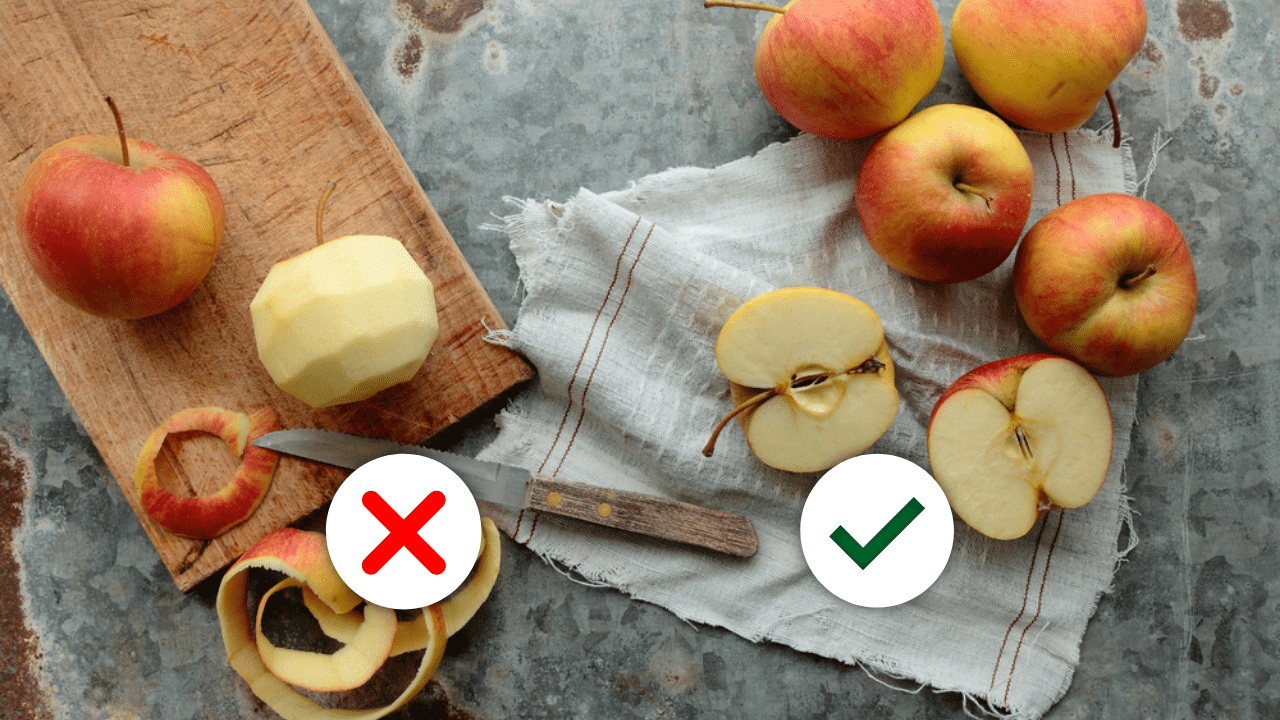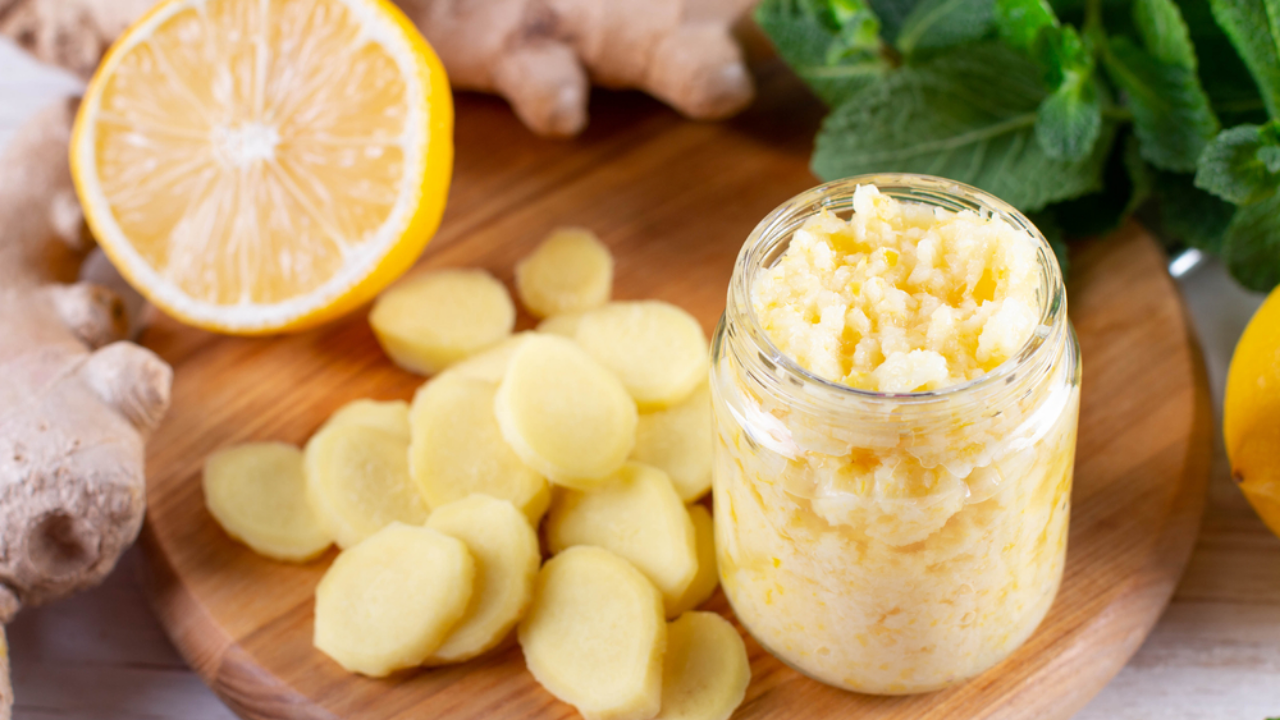
There’s no arguing that eating more fruits & vegetables can benefit your health.
However, whether these fruits & vegetables are best consumed with or without the skin is often up for debate.
Peels are often discarded due to preference or habit or in an attempt to reduce exposure to pesticides. However, removing the peels may mean removing one of the most nutrient-rich parts of the plant.
Almost all experts agree that fruit peels are rich in antioxidants & vitamins, making them in all probability the most nutritious part of the fruit. Whether you consume fruits & vegetables to maintain your health, to stay in shape & fight obesity or to treat other health problems like breathing problems or skin diseases, the importance of including the peels in your dietary intake remains universal. Fruits with tough layered skin may be unpalatable to most in an unpeeled state, as is the case with oranges & pomegranates, but discarding the skin of fruits like apples is pointless. Even when a fruit or vegetable cannot be consumed with its skin, don’t assume that there is no nutrition in the skin. The rind of most citrus fruits like sweet limes & oranges contains much of the nutritional value with an abundance of dietary fibre & phytonutrients.
HERE ARE SOME BENEFITS OF CONSUMING FRUITS AND VEGETABLES ALONG WITH THE PEEL
Rich in Antioxidants: We are often told to eat fruits that have a wide range of colours. While this may seem superficial, it’s a lot more than skin deep! The pigments that lend the skins of these fruits their rainbow colours are also responsible to a large extent for their high nutritional value, as the peels contain a higher concentration of antioxidants as compared to the pulp within. To some extent, you can almost say that fruits come colour coded, as those with darker shades like purple or blue skins are rich in anthocyanidin glycosides, while those with yellow skins contain carotenes & lutein pigments. Blueberries, grapes, carrots & kiwifruit are just a few such fruits.
Good Source of Fiber: Fruit peels are a particularly good source of insoluble fibre. This type of fibre helps to regulate bowel movements & prevents constipation. Many varieties of fruit peels are especially rich in pectin, which is a soluble fibre that offers a variety of health benefits. Pectin is known to lower cholesterol levels & it also helps regulate blood sugar levels. Along with pectin, other rough dietary fibres like hemicellulose also offer some amount of protection from colon cancer. Apple peels are probably the best source of pectin & the peel can even be consumed with the fruit itself
Low in Calories: Fruit peels contain almost no calories, sugars & fats but their high fibre content bulks up your food making you feel satiated a lot faster & for longer. This helps as it reduces the frequency of food cravings & makes it easier for you to cut down your overall calorie intake
Mineral Dense: Fruit peels are also rich in minerals like potassium, manganese, calcium & zinc. Potassium helps to improve heart health by regulating blood flow, calcium is essential for your skeletal health & magnesium is essential for the muscles. Fruits are a good source of minerals, with bananas being especially rich in potassium & magnesium, while avocados are a great source of manganese & phosphorus. As is the case with other fruits banana peels also have a higher concentration of these essential nutrients as compared to the pulp itself.
WHEN TO AVOID PEELS?
Some peels are hard to clean or inedible:
Certain fruit or vegetable peels may be hard to consume or simply inedible.
The peels of avocados & honeydew melon are considered inedible, regardless of whether they are consumed cooked or raw.
Other fruit & vegetable peels, such as those from pineapples, melons, onions, & celeriac, can have a tough texture that is difficult to chew & digest. These peels are generally best removed & not eaten
Furthermore, while some vegetable peels are considered edible, they are not very appetizing for most when raw. Examples are winter squash & pumpkin peels, which are best consumed after cooking to allow the peels to become soft.
Citrus fruits also have tough & bitter skins that can be difficult to consume raw. These are generally best consumed as a zest or cooked, or simply discarded.
Some fruit & vegetable peels, although completely edible, may have a bitter taste or be coated with a layer of wax or dirt that can be particularly hard to remove.
Peels may contain pesticides:
Pesticides are commonly used to reduce crop damage & increase yield.
Washing is a good way to get rid of pesticide residues that are loosely attached to the peel’s surface. However, peeling is the best way to remove pesticides that have seeped into fruit & vegetable skin.
For example, a recent review reports that around 41% of pesticide residues found on fruits were removed by washing with water, while up to twice as much was removed through peeling.
For many people concerned about their overall exposure to pesticides, this may be a good enough reason to eat only the flesh of all fruits & vegetables.
Therefore, while removing the skin of vegetables may get rid of a bit more pesticides than washing does, the difference is likely too small to worry about.








